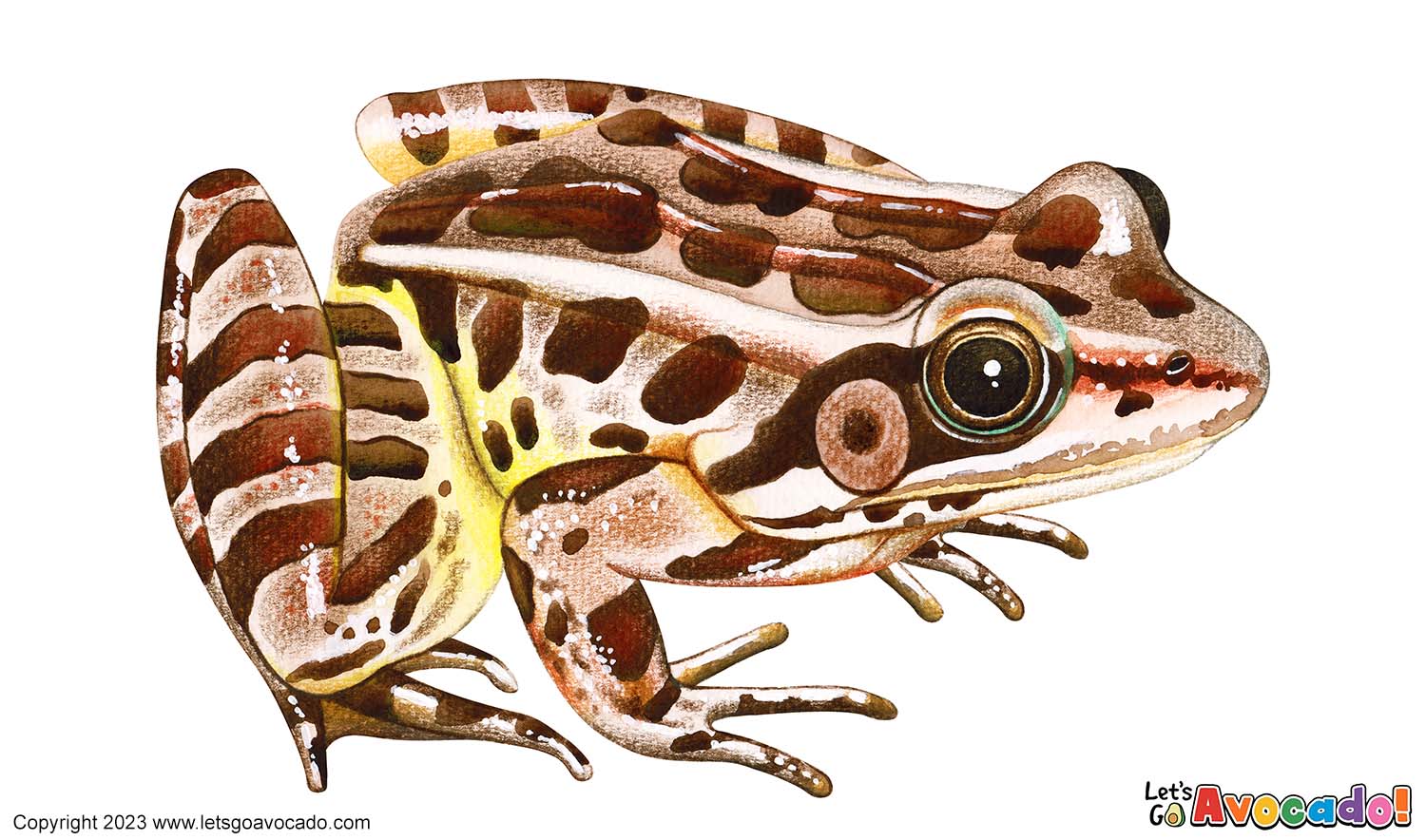

Pickerel Frog
Pickerel Leopard Frog
Lithobates palustris
This page may contain affiliate links.
Read our disclosure and privacy policy here.
The Pickerel Frog, scientifically known as Lithobates palustris, is a small to medium-sized frog species native to North America. It is named after the pattern on its skin, which resembles the markings on a pickerel fish. They have a dark brown or greenish-brown background color with irregular rectangular-shaped spots or squares that vary in shades of brown or black. The spots are often outlined by a lighter border. The Pickerel Frog typically measures around 2 to 3 inches (5 to 8 centimeters) in length, with females being slightly larger than males. Pickerel Frogs are primarily found in the eastern parts of North America, including wetlands, marshes, ponds, and forested areas near water bodies. They are semi-aquatic and are often found near the water’s edge. These frogs are most active during the night and are known for their distinctive call, which sounds like a low, snoring-like trill.
Pickerel Frog
Common Name
Other Names
Latin Name
Distribution
Appearance
Size
Habitat
Behavior
Diet
Lifecycle
Vocalization
Defense Mechanisms
Ecological Importance
ConservationThe act of protecting and preserving natural resources and the environment. Conservation efforts are important to protect beavers and their habitats. Learn More Status

There’s a lot to explore right where we are, in our own neighborhoods and backyards! Join us while we get off the couch and explore the everyday wonders of nature, science, space, engineering, art, and anything else we stumble upon during on our adventures.







